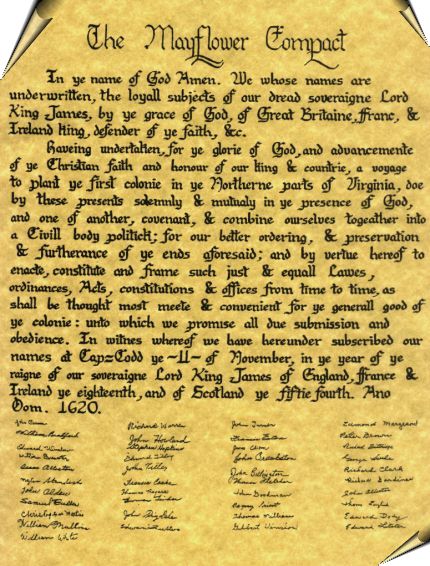This Day in History, December 18, 1620...
Mayflower docks at Plymouth Harbor
The Crossing...
On September 16, 1620, the Mayflower is finally on its way crossing the Atlantic Ocean after two failed attempts sailing along with the Speedwell. On this journey, the ship carried 102 men, women and children passengers. This would be its only trip to New England. Since the cargo was the passengers they all had to live in the dark, cold cargo decks below the crew’s quarters. They all carried the same visions in their hearts and minds: beginning a new life on the other side of the Atlantic Ocean.
The distance from the departure point in Southampton, England to Boston, MA, is 3236 statute miles (equal to 2812 nautical miles). The entire sea journey for the Pilgrims took 66 days. There are 1584 hours in 66 days. The ship, therefore traveled at a speed of 2 miles an hour. An average person can walk 4 miles an hour. Distance at sea is designated in nautical miles. One nautical mile is approximately 1 1/2 statute miles. Sea speed is designated in knots. One knot equals 1 nautical mile per hour. Using sea terms, the average speed of the Mayflower, traveling across the cold, wet Atlantic, was 1.77 knots. [Excerpted from The Mayflower at Sea: 1620]
The Mayflower battered by Atlantic storms. Painting by Mike Haywood
First Anchoring...
On November 11, 1620, after Sixty-six Days at Sea, the Mayflower anchored at what is now Provincetown Harbor, Cape Cod. At this time, leaders of the Mayflower expedition framed the "Mayflower Compact" designed to bolster unity among the settlers. Some consider the Mayflower Compact to be the world's first written constitution and a precursor to American democracy. One must remain mindful that the passengers aboard the Mayflower left England to escape religious and political persecution.
Plymouth Landing...
On December 18, 1620, the British ship Mayflower docked at modern-day Plymouth, Massachusetts, and its passengers prepared to begin their new settlement, Plymouth Colony. These are our ancestors to whom we owe thankfulness and gratitude for their perseverance and courage throughout such a monumental journey. Have you ever checked the Mayflower passenger list? Perhaps you will find a relative within the handwritten manuscript.



No comments:
Post a Comment